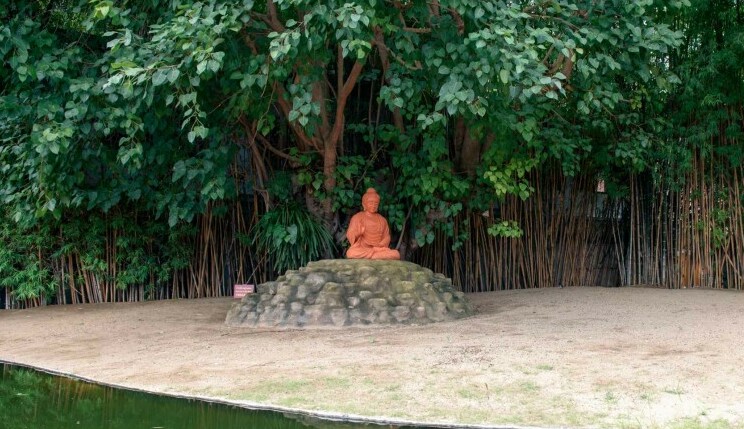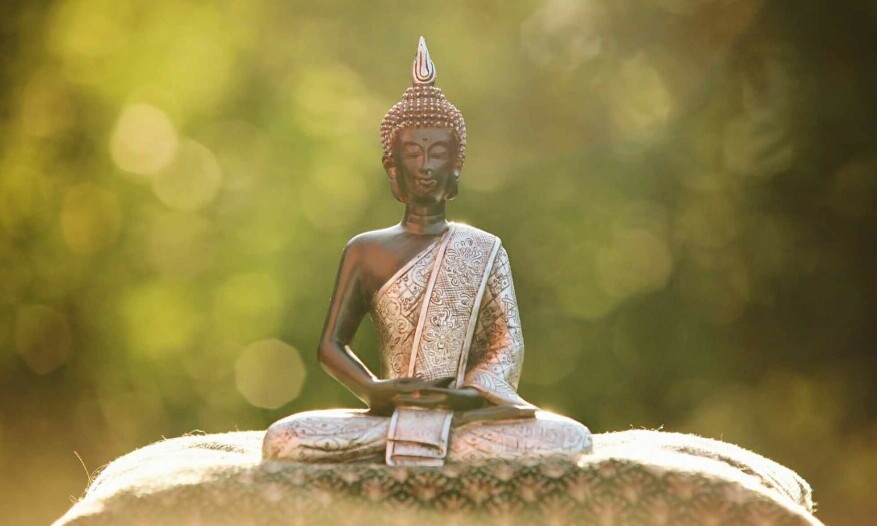Have you ever wondered what it’s like to attain the same peaceful state of mind that Buddha achieved through meditation? If this question has ever crossed your mind, then you’re in for an enlightening journey. In this post, we’ll explore the ancient practice of meditation and reveal the secrets of “how to meditate like Buddha.“
Meditation is connected to the life and wisdom of Siddhartha Gautama, who eventually became the Buddha. To meditate like him, it’s crucial to understand the core principles of his practice. We’ll explore the foundations of the Buddha’s meditation, covering the basics, adopting the proper posture, and delving into techniques he personally practiced. From focusing on your breath to cultivating mindfulness and learning how the Buddha tackled common meditation challenges. So, let’s dive in and discover the timeless secrets of meditating like the Buddha!
Why did Buddha Start to Meditate?
Buddha’s journey into meditation was driven by his deep curiosity about the nature of human suffering and his quest for a path to genuine freedom from it. He didn’t intend to escape the world’s problems; rather, he saw meditation as a powerful tool for self-discovery and inner peace. His meditation practice ultimately led to his enlightenment and the founding of Buddhism.
To put it simply, what Buddha aimed to do through meditation was to quiet the mind, gain insight into thoughts and emotions, and, most importantly, rise above the grip of suffering. It’s a remarkable journey of self-discovery and personal growth.
How did Buddha Create an Ideal Environment for Meditation?

When we look at Buddha’s meditation, we see that he often sought solitude and tranquility under the Bodhi tree. While you don’t need to find your own Bodhi tree, creating a serene and distraction-free environment can make a world of difference.
Always remember your environment impacts your inner state. You can replicate the peace and serenity that Buddha found under the Bodhi tree by creating an ideal environment that supports your meditation practice.
So how can you create an ideal environment for your meditation practice? Find a quiet space, keep it tidy, use soft lighting, silence your phone, and let your loved ones know it’s your sacred time. This way, you can fully focus on your practice and find inner peace.
How to sit like a Buddha?

Buddha’s meditation posture is often depicted as him sitting cross-legged in what’s known as the “lotus position.” In this posture, both of his legs were folded with his feet resting on his thighs.
However, it’s important to note that the lotus position can be challenging, especially for beginners. Don’t be discouraged if it feels uncomfortable at first. Buddha himself likely didn’t start in this position. Instead, consider it a goal to work toward as your flexibility and comfort increase with practice.
You can choose a posture that suits your body and comfort level. If you are not comfortable sitting directly on the floor then you can very well sit on a chair with your feet flat on the ground. The key is to maintain a posture that keeps you alert and focused while allowing your body to relax.
Meditation Techniques Primarily Practiced by Buddha
Anapanasati Technique
Buddha’s primary meditation technique was Anapanasati, which is the practice you can start by focusing on your breath. This technique involves focusing your attention on the natural breath as it goes in and out, without attempting to control or manipulate it. The breath becomes your anchor to the present moment, allowing you to observe your thoughts and emotions without attachment.
Vipassana Technique
In addition to Anapanasati, Buddha also practiced Vipassana, another prominent meditation technique. Vipassana is the practice of insight meditation, where you observe the arising and passing of thoughts, sensations, and emotions. It’s a method to gain profound insights into the impermanence of all things and the nature of suffering.
Why did Buddha Practice These Techniques?
The primary aim of practicing these meditation techniques is to understand the profound wisdom contained in the Four Noble Truths of life and embrace the transformative journey outlined in the Eightfold Path, ultimately leading to liberation from suffering. If you’re eager to delve deeper into this fascinating path, I encourage you to explore my article on “How to Practice Buddhism,” where I have thoughtfully explained the fundamental teachings of Buddhism. It’s a great resource to help you on your spiritual journey.
How did Buddha Practice Being in the Present Moment?
Buddha’s meditation practice involved focusing attention on the present moment i.e. observing his thoughts, bodily sensations, and mental states (emotions) without attachment or judgment – We now call this Mindfulness. Cool, right?
By engaging himself fully in the present moment, he freed himself from distractions and the burdens of the past or anxieties about the future. Through consistent practice, he attained a state of mental clarity, equanimity, and liberation from suffering.
As you embrace this practice, remember it is not about achieving perfection. It is a gradual process of self-discovery and growth. The more you practice, you develop a keen understanding of your thoughts, emotions, and reactions.
How did Buddha Overcome Common Challenges in Meditation?
Buddha wasn’t just about sitting cross-legged and magically entering a state of bliss. He actively engaged with the challenges that arose during meditation. Here’s a glimpse into how he navigated these obstacles:
Restlessness
Buddha compared the mind to a monkey, jumping from thought to thought. His solution? Patience and gentle redirection. Acknowledge the restlessness, and gently guide your mind back to your breath or chosen focal point.
Wandering Thoughts
Thoughts are like clouds passing through the sky of your mind. Buddha advised observing them without attachment. Let them drift by, and gently bring your focus back to the present moment.
Physical Discomfort
Buddha embraced discomfort as part of the human experience. If your body protests during meditation, adjust your posture mindfully. Find a position that combines alertness and ease, allowing both stillness and comfort.
Lack of Concentration
Buddha emphasized mindfulness and concentration practices. Techniques such as mindfulness of breath (Anapanasati) aimed at refining focus. Redirecting attention to the breath or a specific point allowed practitioners to build concentration gradually.
Impatience & Frustration Regarding the Progress of Meditation
Buddha advocated for patient persistence. Understanding that the path to enlightenment is gradual, he likely encouraged practitioners to celebrate small victories, acknowledging progress without becoming disheartened by perceived shortcomings.
Ego & Spiritual Pride
Buddha cautioned against falling into the trap of spiritual arrogance. Humility and self-awareness were likely key aspects of his teachings, guiding practitioners to recognize and transcend the ego’s influence.
Buddha’s Journey to Self-Realization
Buddha’s path to self-realization was paved with the stones of meditation. Through dedicated practice, he gained deep insights into the nature of existence, and ultimately attained enlightenment. The same path is available to you.
Your path may not mirror Buddha’s, but as you dive into meditation and make mindfulness a habit, you’ll feel a change taking place within. It’s like unwrapping layers of old habits, revealing the true, authentic you. This journey is all about self-discovery, a sort of coming home to the genuine truth that’s been inside you all along.
Conclusion
The essence of this post is to empower you with the belief that meditation, as practiced by Buddha, is not an exclusive club. It’s a journey open to anyone willing to dedicate time and effort. Just like the lotus blooms in muddy waters, your inner peace can blossom amidst the chaos of daily life.
No matter your background, experience, or current state of mind, you have the capacity to tap into the transformative power of meditation. It’s not about perfection; it’s about the dedication to the practice and the journey of self-discovery.
As I conclude this post, I extend a heartfelt invitation for you to embark on a transformative journey through a meditation program that has personally resonated with me. Uncover personalized guidance, expert insights, and a supportive community to elevate your meditation experience. Take the first step by discovering it for yourself—click the link below. Happy meditating!

